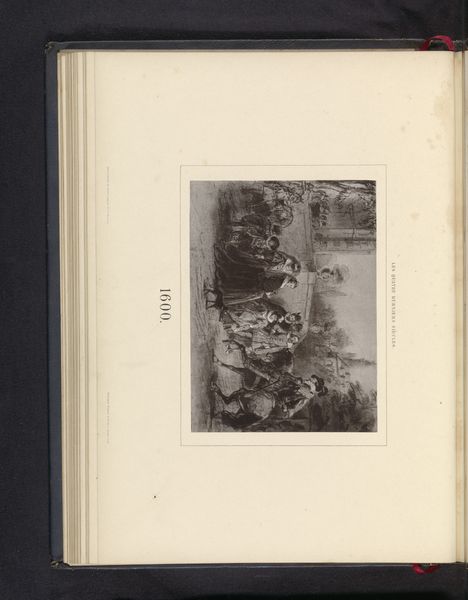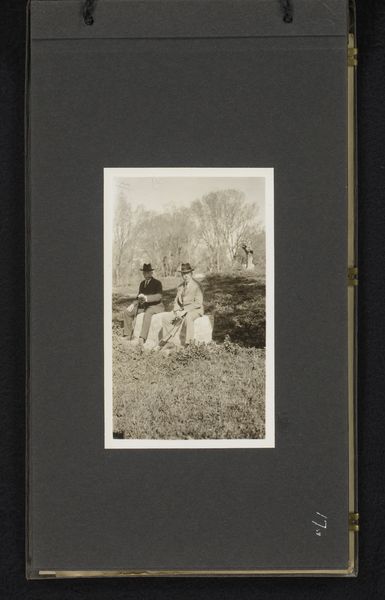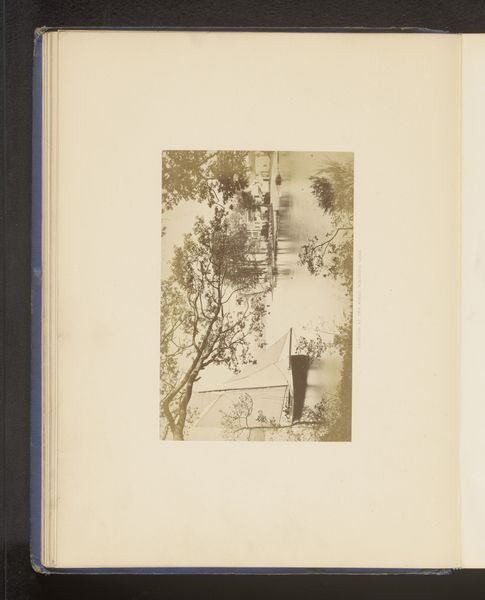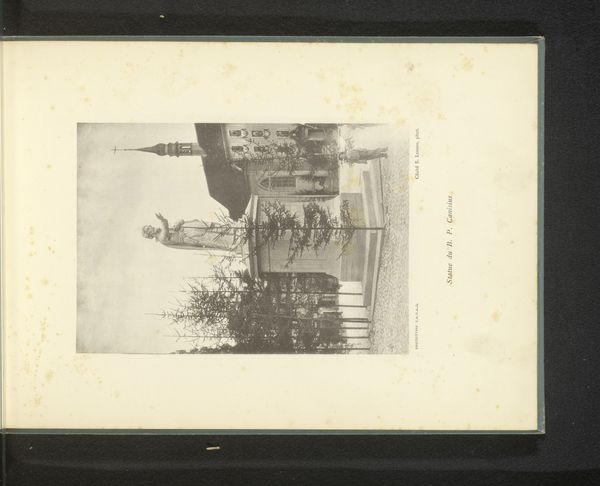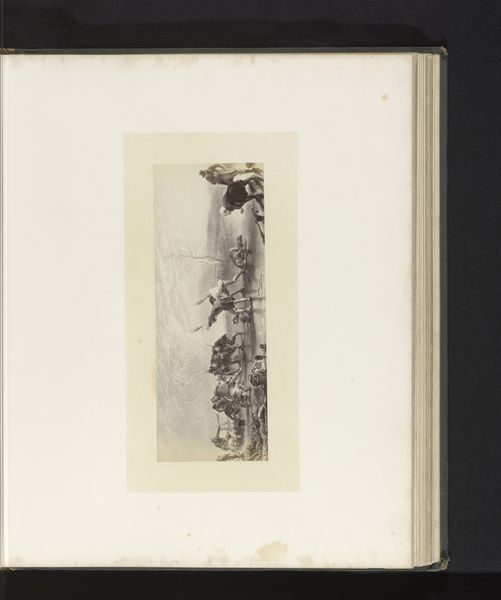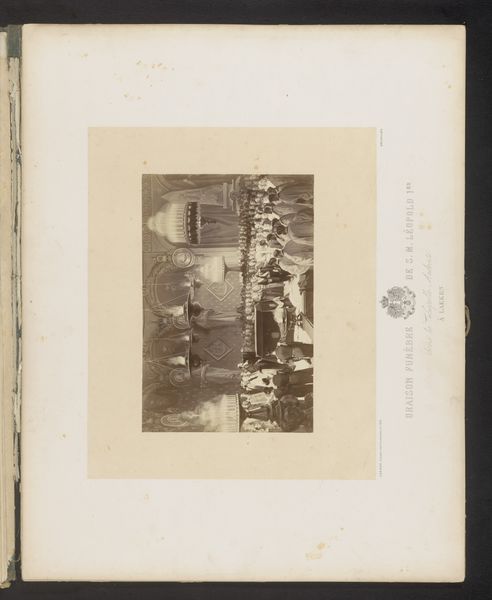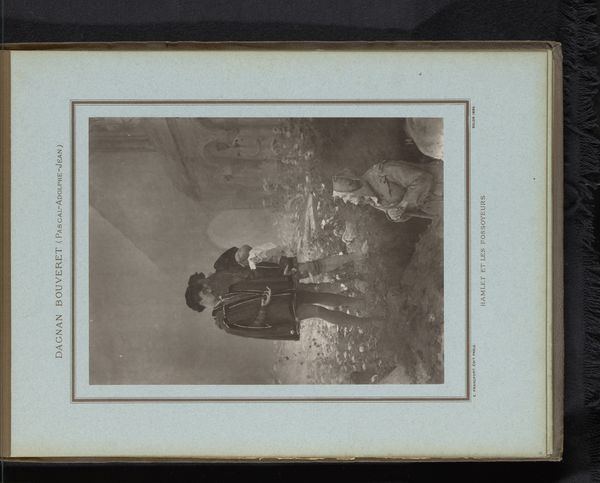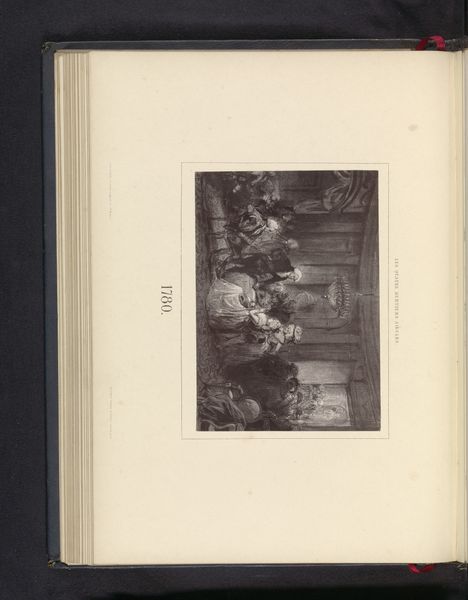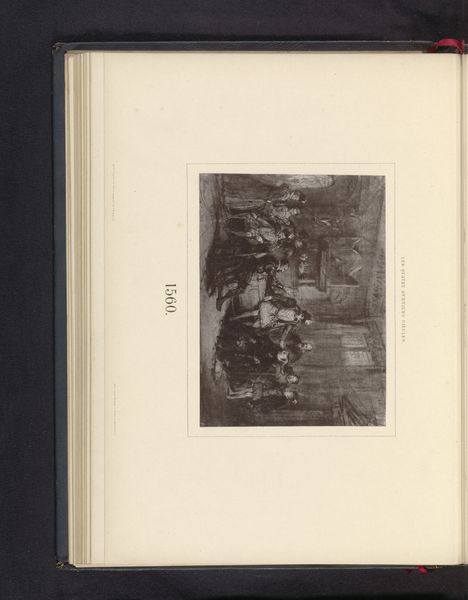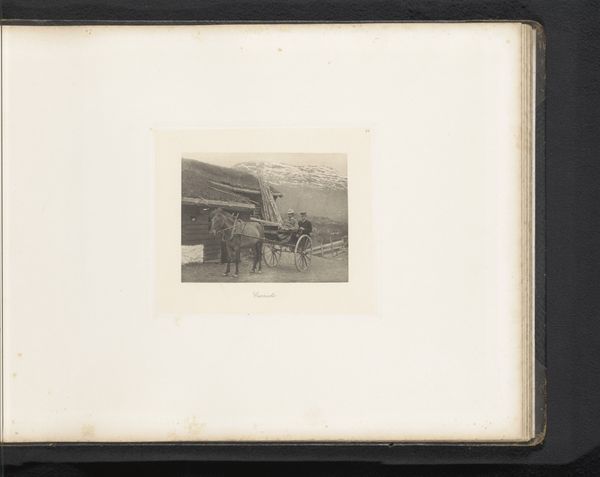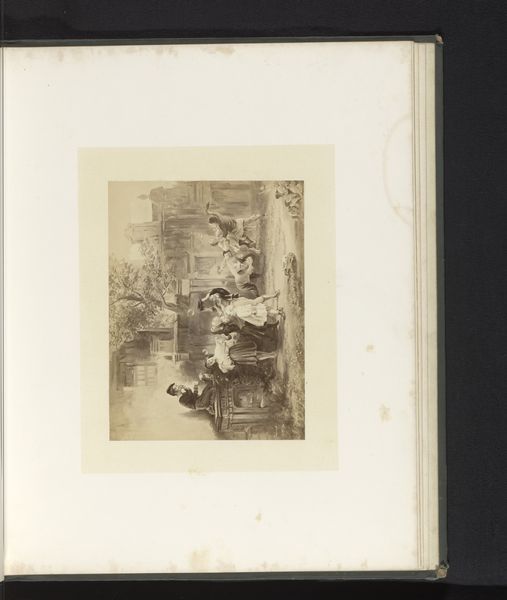
Twee Europese mannen en een Marokkaanse man in de tuin van de Resident Generaal te Fez Possibly 1927
0:00
0:00
photography
#
portrait
#
african-art
#
stone
#
sculpture
#
photography
#
orientalism
#
genre-painting
Dimensions: height 111 mm, width 68 mm, height 125 mm, width 210 mm
Copyright: Rijks Museum: Open Domain
Editor: This photograph, "Twee Europese mannen en een Marokkaanse man in de tuin van de Resident Generaal te Fez," possibly from 1927, by A.G.A. van Eelde, really captures a specific moment in time. The composition, with the three men posed somewhat formally in what looks like a government official’s garden, feels quite staged. What do you make of it? Curator: This image speaks volumes about the power dynamics of the colonial era. The "Resident Generaal," by definition, represented French power in Morocco. So, positioning the Europeans within his garden, alongside a Moroccan man, it subtly reinforces a hierarchy. What do you observe about their clothing and posture? Editor: The two European men appear to be dressed in what I would describe as everyday European clothing, while the Moroccan man is dressed in more traditional clothing, a fez specifically. Their posture seems quite casual, almost as if they're on display. Curator: Exactly. The setting is carefully arranged to showcase this interplay between colonizer and colonized. The very act of photographing this scene turns it into a document, a form of visual record-keeping that reinforced colonial narratives about who held power, and what roles each group occupied within Moroccan society under French rule. It raises a poignant question: Who was the intended audience for this photograph, and what message was it meant to convey? Editor: So it's less about capturing an everyday scene, and more about creating a visual representation of colonial power? It feels constructed, like propaganda almost. Curator: Precisely. Consider the Orientalist style. It often romanticized the "East," but in a way that also solidified European dominance. These images circulated, shaping perceptions and justifying political actions. Editor: I hadn't considered the role the photograph itself played in that power dynamic. Thank you, that really opens up a new way of understanding it for me. Curator: It's about understanding art's complicity, and its potential for challenging such narratives, even decades later.
Comments
No comments
Be the first to comment and join the conversation on the ultimate creative platform.
